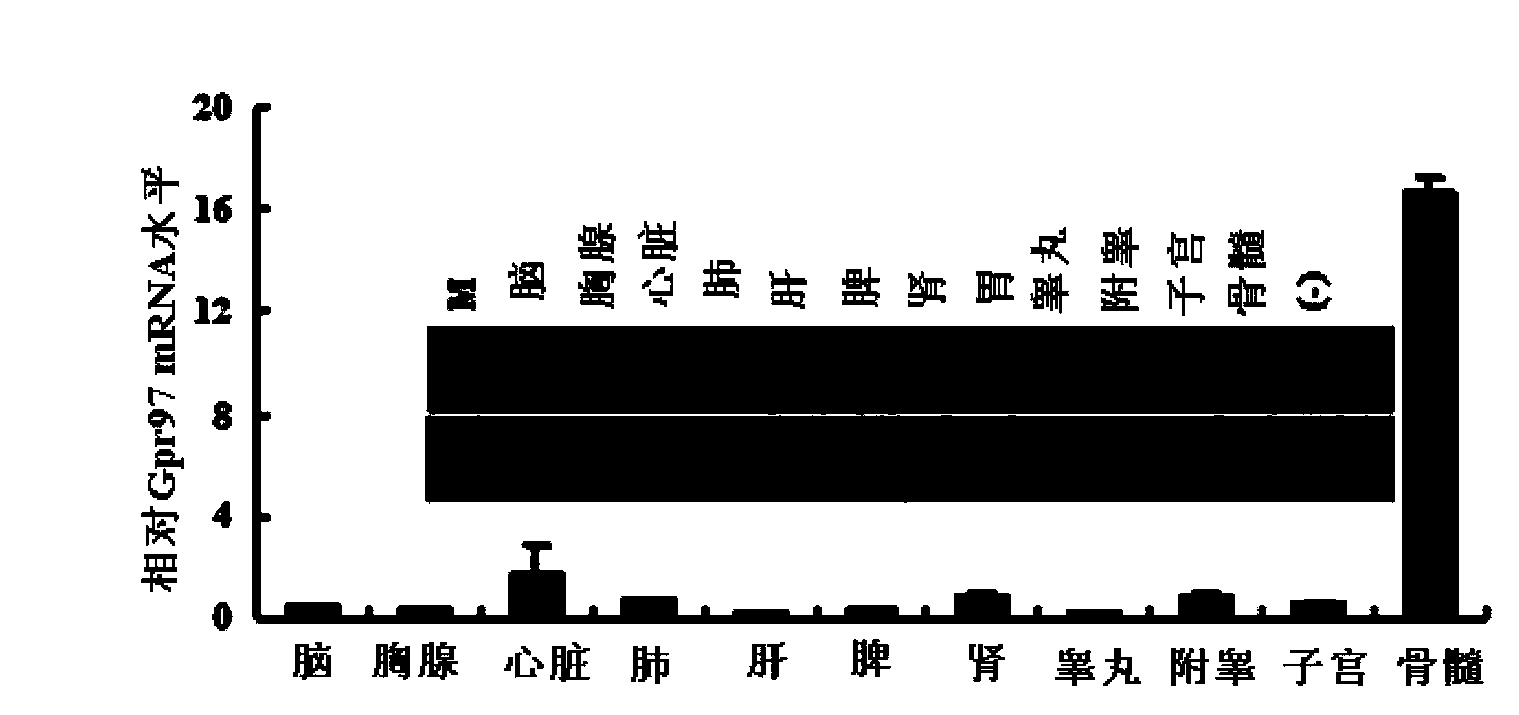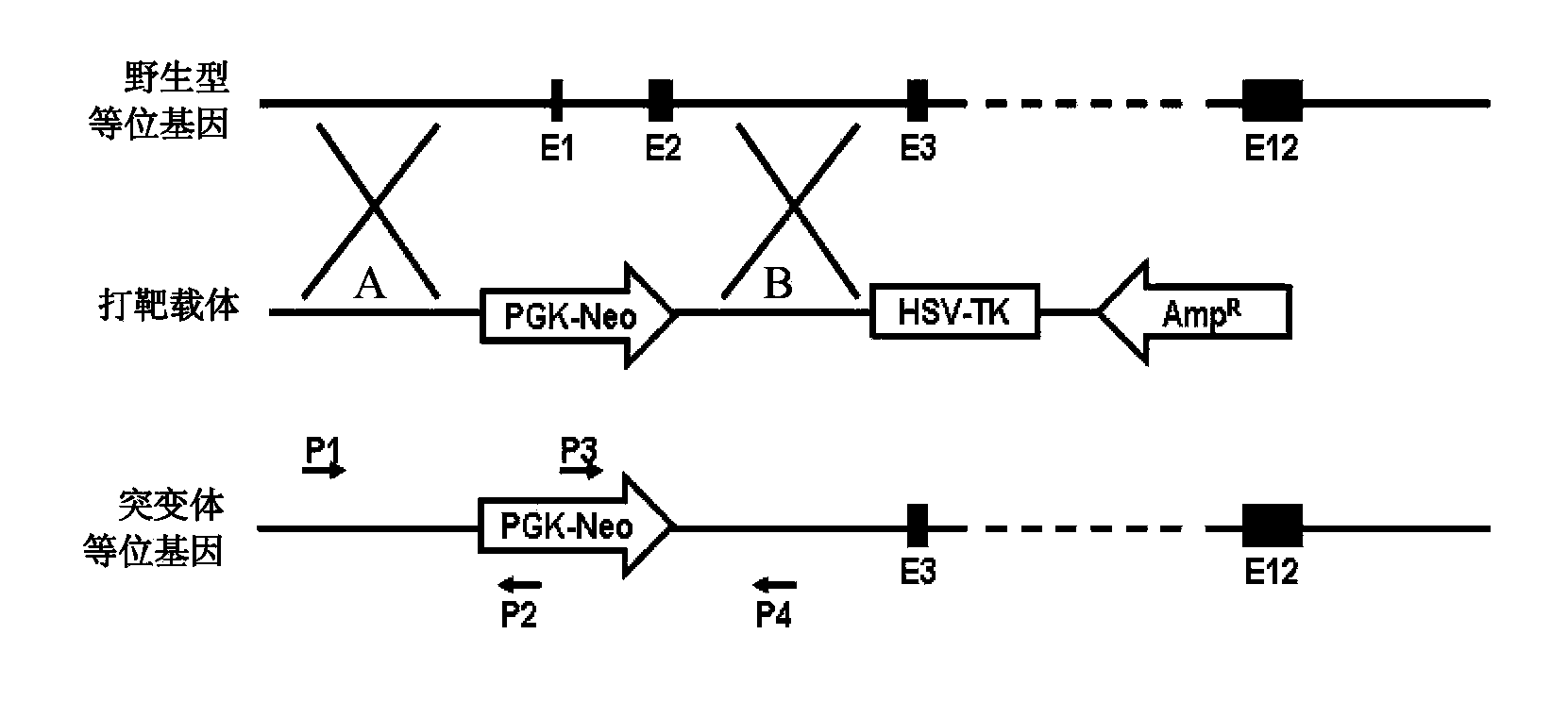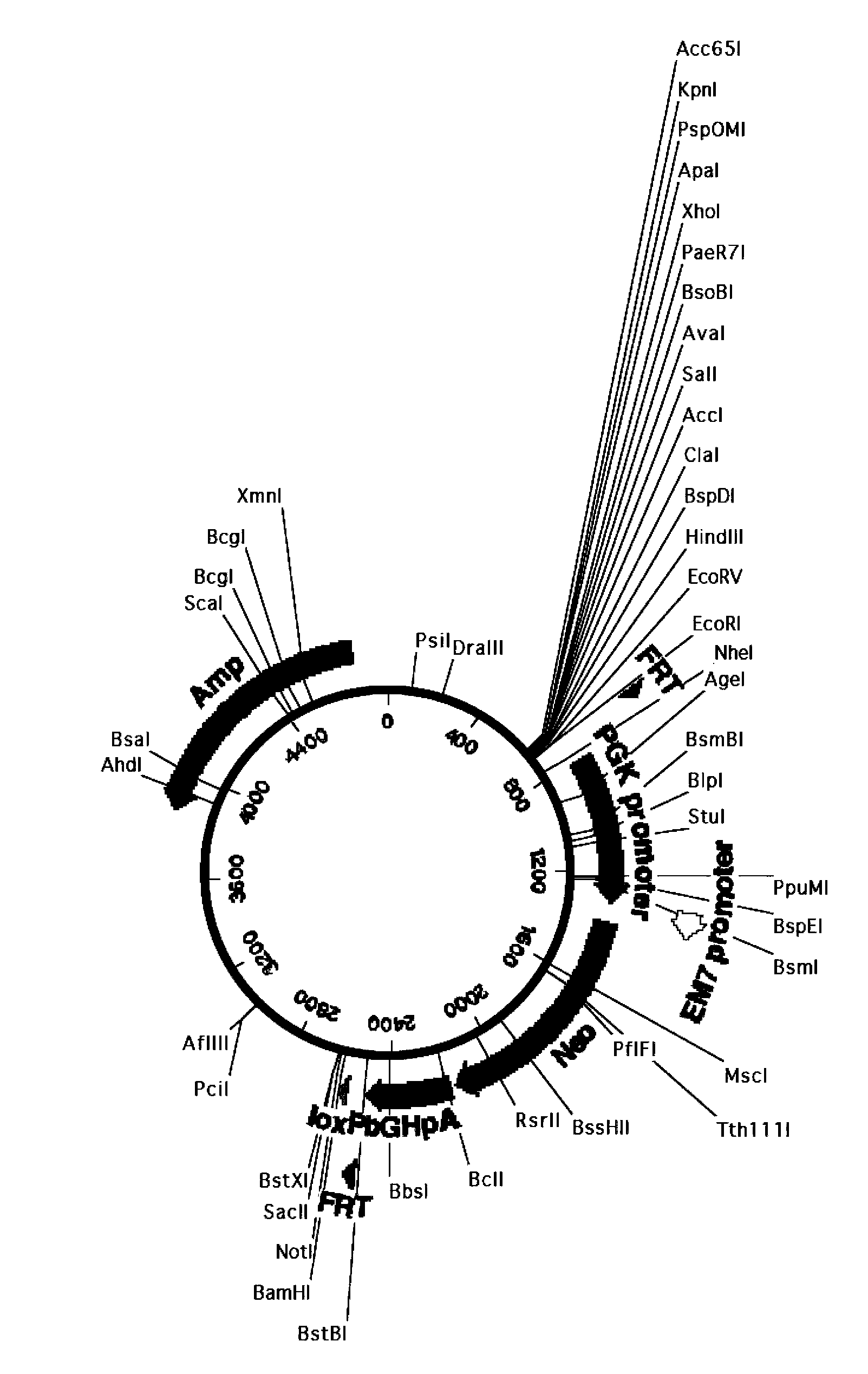Making method and use of non-human mammal B lymphocyte defect animal model
A non-human mammal, B lymphocyte technology, applied in the biological field, can solve the problems of unknown physiological functions of G protein-coupled receptors, no animal model G protein-coupled receptors physiological functions, etc.
- Summary
- Abstract
- Description
- Claims
- Application Information
AI Technical Summary
Problems solved by technology
Method used
Image
Examples
Embodiment 1
[0045] Example 1. Comparison of amino acid sequence homology between human GPR97 protein and mouse GPR97 protein
[0046] The amino acid sequence of human GPR97 protein is shown in SEQ ID NO.1.
[0047] The amino acid sequence of the mouse GPR97 protein is shown in SEQ ID NO.2.
[0048] The above-mentioned amino acid sequences of mouse GPR97 protein and human GPR97 protein were compared with NCBI's blastp software (http: / / www.ncbi.nlm.nih.gov / BLAST / ), and the calculation results showed that the mouse GPR97 protein and The amino acid sequence homology of human GPR97 protein is as high as 68%. The specific comparison data are as follows:
[0049] HGPR97 SGQEKPTEGPRNTC--LGSNNMYDIFNLNDKALCFTKCRQSGSDSCNVENLQRYWLNYEA 76
[0050] + E+ TE PRN C L + YD F+LND A CFTKC QS C+V NLQRYWLNYE+
[0051] MGPR97 TSDEETTEEPRNVCRRLQEGHEYDTFDLNDTAQCFTKCGQSEHSPCDVGNLQRYWLNYES 75
[0052] HGPR97 HLMKEGLTQKVNTPFLKALVQNLSTNTAEDFYFSLEPSQVPRQVMKDEDKPPDRVRLPKS 136
[0053] +L++ + + V+ PF+...
Embodiment 2
[0076] Example 2, Tissue expression profile of Gpr97 gene at RNA level
[0077] The relative expression level of Gpr97 in mouse tissues was detected by cDNA samples from 12 mouse tissues, including brain, thymus, heart, lung, liver, spleen, kidney, stomach, testis, epididymis, uterus, and bone marrow. RNA was extracted with Trizol reagent (Invitrogen) and operated according to the instructions. 2 μg of total RNA was reverse transcribed into cDNA using MMTV reverse transcriptase (Promega, Madison, WI). cDNA is amplified with specific primer pairs. The primers for β-actin and Gpr97 in reverse transcription PCR are: β-actin (forward: 5'-GCCTTCCTTCTTGGGTATG-3'SEQ ID NO.:3 and reverse: 5'-ACGCAGCTCAGTAACAGTCC-3'SEQ ID NO.: 4), Gpr97 (forward: 5'-CACCTTCGACTTGAATGACACTGCTC-3' SEQ ID NO.: 5 and reverse: 5'-TGCTGATGTTCTGGATCAATGCCTT-3' SEQ ID NO.: 6). Amplified products were separated by agarose gel electrophoresis and observed by EB staining. Double-stranded DNA-specific fluoresc...
Embodiment 3
[0078] Example 3, Preparation and identification of Gpr97 gene inactivated mice
[0079] In order to make the Gpr97 gene inactivation of mice, the inventor has designed such as figure 2 The targeting strategy shown, figure 2 The design of the targeting vector is shown in . The mouse Gpr97 gene has a total of 12 exons. Using bioinformatics, the inventors deleted exons 1 (E1) and 2 (E2) of the Gpr97 gene, totaling 3368 bp, and replaced them with the neo gene. Exon 1 was deleted because it contained the start codon (ATG). The lengths of its 5' homology arm and 3' homology arm are 6116bp and 3485bp, respectively.
[0080]In a specific embodiment of the present invention, the ET cloning method is used to construct the Gpr97 gene targeting vector. The specific process is as follows: two pairs of primers A1, A2 and B1, B2 are used to amplify the A and B homology arms respectively from the bacterial artificial chromosome (BAC) containing the Gpr97 genome sequence. The primer se...
PUM
 Login to View More
Login to View More Abstract
Description
Claims
Application Information
 Login to View More
Login to View More - R&D
- Intellectual Property
- Life Sciences
- Materials
- Tech Scout
- Unparalleled Data Quality
- Higher Quality Content
- 60% Fewer Hallucinations
Browse by: Latest US Patents, China's latest patents, Technical Efficacy Thesaurus, Application Domain, Technology Topic, Popular Technical Reports.
© 2025 PatSnap. All rights reserved.Legal|Privacy policy|Modern Slavery Act Transparency Statement|Sitemap|About US| Contact US: help@patsnap.com



